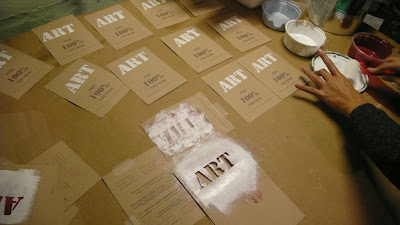 My year-end media piece for Minnesota Monitor:
My year-end media piece for Minnesota Monitor:A confession: A year ago last week, on December 26, 2006, I knew very little about the inner workings of a metropolitan newspaper, much less the intricacies of Newspaper Guild contracts, newsroom politics or voluntary buyouts. But when Avista Capital Partners, a nobody of a company in terms of its news-industry know-how, bought the Star Tribune the day after Christmas, a year's worth of stories opened up to me. And thanks to good sources, great advisors and a reliable, much-dialed telephone, I covered it all.
I was the first to write about a then-little-known clause in the Star Tribune's contract that eventually enabled dozens of reporters and editors to flee the paper with sizable paychecks, and I broke news that big names like Eric Black, Jim Boyd and Dane Smith were taking buyouts. I covered the rubberband-tight tensions brought on by the sale: a veteran staffer's daily meditation viewed as espionage, protesters in black armbands outside Strib HQ, an award-winning sportswriter's (ultimately unsuccessful) bid to save his job and the galling zaniness surrounding, well, just about everything Par Ridder did.
But my favorite story of the year was none of these, but closely related.
On this last day of 2007, looking forward to a year when the Twin Cities hosts the Republican convention, Democrats are hoping to capture more congressional seats, and Minnesota's unique personalities -- from Keith Ellison and Michele Bachmann to Al Franken and Amy Klobuchar -- are aiming to make an impact in our nation's capital, I'm interested in what happened to the Washington, D.C., bureau of the Star Tribune this year -- and, no thanks to the Twin Cities daily, discuss what will hopefully be a happy ending to this tale.
In March, Rep. Betty McCollum's office sent out a memo that, in part, bid a grateful farewell to longtime Star Tribune D.C. reporters Rob Hotakainen and Kevin Diaz, who were staying with McClatchy, the company that had just sold the paper to Avista. Avista lowballed the pair on salaries; at the time, Diaz said the offer would effectively mean giving "back every performance pay raise I've received since I came to Washington in 2000."
Strib management was incensed that McCollum's memo gave "the misimpression that the Star Tribune will now be covering Congress only with an intern," as Kate Parry, readers' representative at the time, put it. She argued that University of Minnesota grad Brady Averill would be assisted by McClatchy news wires and Minneapolis-based editors.
In fact, Averill was the paper's only D.C.-based employee for 78 days in 2007. A week after her internship ended in May, management announced it'd be rehiring Diaz.
Today, Diaz is the Star Tribune's only full-timer, aided by an intern. The Pioneer Press doesn't have anyone in D.C.
According to Tom Hamburger, a Pulitzer finalist for his work with the Star Tribune and now a Los Angeles Times writer, the Washington bureau had five employees when he started there in 1989 -- four full-timers and an intern.
So where's the good news?
Right here. Minnesota Monitor's parent organization, the nonprofit Center for Independent Media (CIM), is opening what could be considered Minnesota's biggest D.C.-based news bureau. The Washington Independent, now in press-release mode but launching in mid-January, will have a staff of 10 to 12 reporters and editors covering Washington with an eye for the states with CIM daily news sites (Colorado, Iowa, Michigan and Minnesota).
 The site has hired a bevy of staffers who have worked for the Washington Post, Talking Points Memo, The Charlie Rose Show, Associated Press, and The Nation, to name a few. But it's a two-way deal:
The site has hired a bevy of staffers who have worked for the Washington Post, Talking Points Memo, The Charlie Rose Show, Associated Press, and The Nation, to name a few. But it's a two-way deal:Minnesota gets original news from Washington reported by writers who know us and our state. They'll cover policies that affect us, track our elected officials and provide on-the-ground resources for Minnesota Monitor fellows reporting on national issues. And when, say, they'd like to know how a bill before Congress will affect working people in Minnesota, we'll be there to help find those voices.
But The Independent will also pick up the best daily news from Minnesota, giving our writers a direct pipeline to decision-makers in Washington. In times when regional papers are stripping (or shutting) down national desks, we'll have one -- and, more unique, The Independent will have something nearly unheard of: satellite bureaus in four states.
Better yet, the plan is to lay out a clear career path for young journalists in our state programs: Eventually, The Washington Independent will have at least one Minnesotan covering our news.
The mantra at the Star Tribune of late has been "local, local" -- it's mandated that editorials will only focus on local issues, it's reassigned reporters with years of expertise in a range of beats to cover the suburbs, and it's zoned editions, to provide specific communities with ultra-local news.
For the 16 months since our inception, Minnesota Monitor has lived "local, local," and in 2008, we'll continue that intense focus, aided by a much-needed new website design and some new faces. But with an office full of new Washington colleagues, we hope to broaden our coverage -- to fill in the gaps left by a changing mainstream news business.
When I wrote about Diaz's departure in March, I concluded with his less-than-optimistic assessment of an industry facing buyouts and belt-tightening.
"Welcome to the modern American newsroom," he said.
In 2008, maybe those same words can take on a more hopeful tone.






















